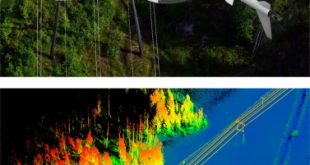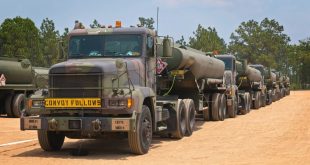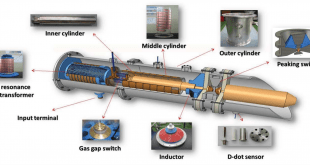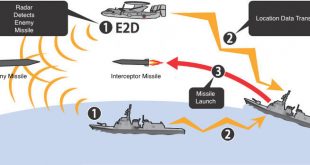Being able to converse with people who don’t speak English is essential for the Army, since every day, Soldiers are partnering with militaries in dozens of countries around the world. A number of speech-translator devices are available commercially, and Soldiers have been using them. However, speech translators are seldom completely accurate …
Read More »Requirement of New military technology for aircrews in Helicopters and small aircraft to detect and avoid thin artificial objects such as power lines
Helicopters and small aircraft flying at low altitude in the visual flight rules often strike against obstacles. According to the aircraft accident reports in Japan, many collisions by small aircraft were caused by long, thin artificial objects as power lines because they are often very difficult to find by pilot …
Read More »Swarm technologies enable militaries to employ them for ISR, force protection and precision firepower
Criminals and militants have now started using swarm of commercial available drones thereby engancing their effectiveness and lethality. Military is also developing swarms for many applications including ISR, decoys or as swarm of weapons. Swarms are expected to be effective even in A2/AD environments. Instead of being individually directed …
Read More »US DOD developing Fuel Cells to power Military Vehicles, UAVs , Submarines, Military Bases to Soldier wearables
A fuel cell is a device that generates electricity by a chemical reaction. It converts hydrogen and oxygen into water, and in the process also creates electricity. Fuel cells provide many advantages, they are environment friendly as they don’t produce pollutants or greenhouse gasses, significantly improving our environment, high energy efficiency ( …
Read More »US Army planning Future Brigades able to Fight for a Week Without Resupply
Just as the Army shifts its priorities to fighting in more domains than ever before and training for major combat operations against capable rivals, so too must its logistics harden, speed up and adapt to a challenging warfighting landscape. Lt. Gen. Aundre Piggee, the Army G-4, told an audience …
Read More »Rising role of open source software and open-source framework in Military
Open source software is free to license, the preferred choice of geeks everywhere, for rapid development for instance impromptu mapping projects to help victims of the 2010 Haiti Earthquake where open source delivered results much faster than traditional methods. “It probably would have taken a year to come up with …
Read More »High Power electromagnetic technologies enable Electromagnetic Weapons on Aircrafts, combat drones and missiles
A high-powered microwave weapon (HPM) is type of Directed Energy Weapon (DEW) for employing radio frequency energy against a variety of targets. They are principally counterelectronic weapons and could be used to destroy any enemy electronic systems, including radars, computer systems and communications infrastructures. Electromagnetic weapons can destroy, intercept or jam …
Read More »DARPA’s GCA harnessing commercially available Geospatial Imagery on secure cloud-based platform for Defense Analysis
The rapid pace of new commercial satellite constellation launches has led to a corresponding increase in the amount and availability of geospatial data. While these constellations largely focus on non-military uses, their data has numerous military applications. For example, the new constellations provide optical, synthetic aperture radar (SAR), and Radio Frequency …
Read More »Countries developing Cooperative Engagement Capability (CEC) to transform Naval Anti-air Warfare with enhanced throughput, scalability and Interoperability
Cooperative Engagement Capability (CEC) is a sensor network with integrated fire control capability that is intended to significantly improve battle force air and missile defense capabilities by combining data from multiple battle force air search sensors on CEC-equipped units into a single, real-time, composite track picture (network-centric warfare). This will …
Read More »Power systems, thermal management and cooling technologies are critical for wide employment of directed energy weapons
A directed-energy weapons (DEW) are ranged weapon systems that inflicts damage at a target by emission of highly focused energy, including laser, microwaves and particle beams. Potential applications of this technology include anti-personnel weapon systems, missile defense system, and the disabling of lightly armored vehicles or mounted optical devices …
Read More » International Defense Security & Technology Your trusted Source for News, Research and Analysis
International Defense Security & Technology Your trusted Source for News, Research and Analysis









